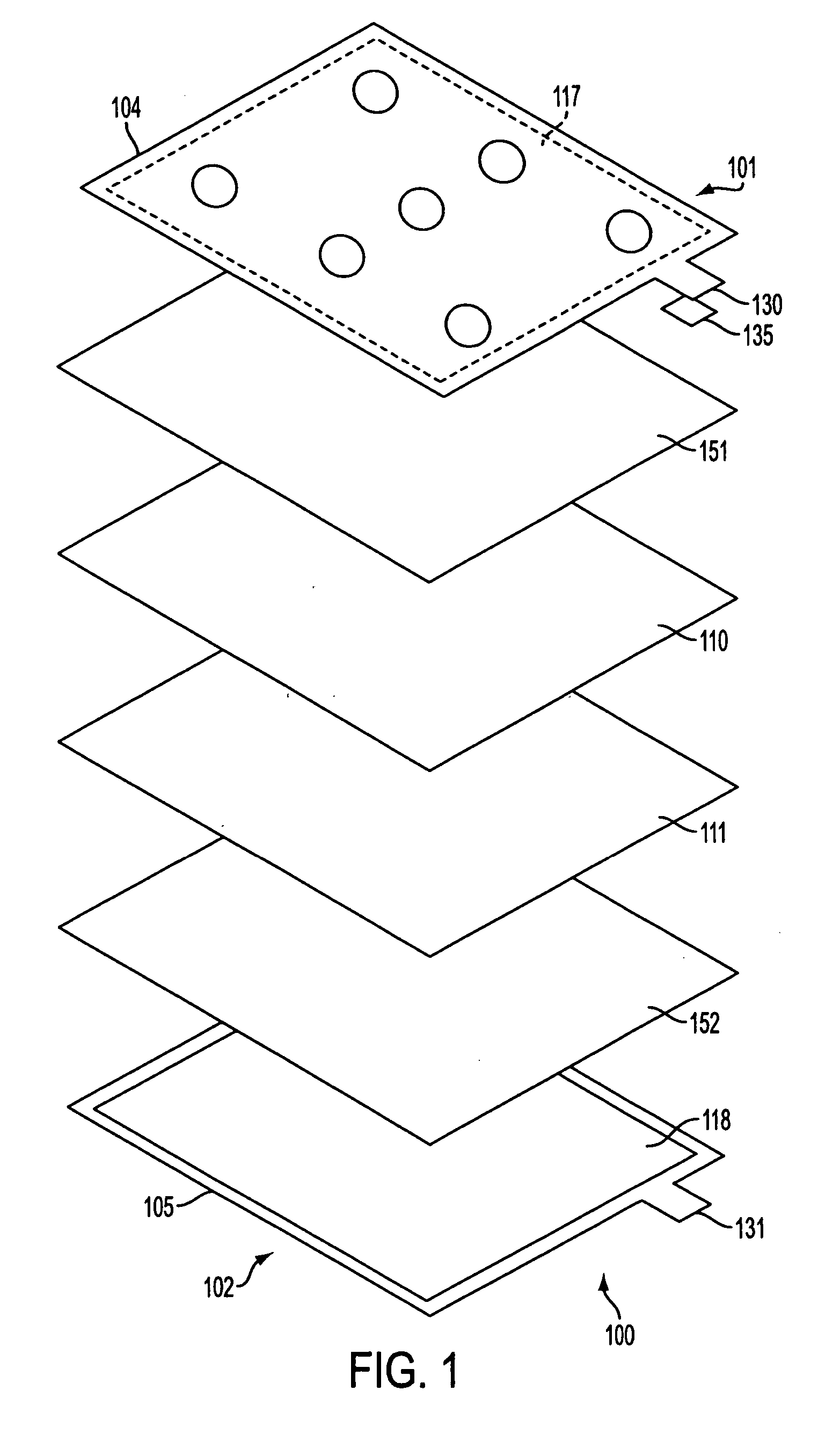Multi-cell battery charge control
a charge control and multi-cell technology, applied in the field of batteries, can solve the problems of thermal runaway, more difficult charge control, damage to cell materials,
- Summary
- Abstract
- Description
- Claims
- Application Information
AI Technical Summary
Problems solved by technology
Method used
Image
Examples
Embodiment Construction
[0030] Embodiments of the present invention provide a method and apparatus for controlling the charge and / or discharge of a multi-cell battery. In one example, the invention may monitor and / or use the pressure that may be generated at the end of charge and / or discharge of a multi-cell battery to control the charge and / or discharge of the battery. The multi-cell battery may include a plurality of re-chargeable cells that may be connected in series to optimize charge input and / or to avoid excessive overpressure of the cells during battery operation.
[0031] In embodiments of the present invention, individual bipolar wafer cells may be constructed with, for example, a pressure tab area or the like that can exert a force to trigger a pressure sensitive mechanism when gas pressure is generated within the wafer cell. The pressure tab area may be an area that may expand and generate a force in response to pressure in the wafer cell. In this example, a plurality of cells may be stacked in se...
PUM
| Property | Measurement | Unit |
|---|---|---|
| thick | aaaaa | aaaaa |
| voltage | aaaaa | aaaaa |
| constant current | aaaaa | aaaaa |
Abstract
Description
Claims
Application Information
 Login to View More
Login to View More - R&D
- Intellectual Property
- Life Sciences
- Materials
- Tech Scout
- Unparalleled Data Quality
- Higher Quality Content
- 60% Fewer Hallucinations
Browse by: Latest US Patents, China's latest patents, Technical Efficacy Thesaurus, Application Domain, Technology Topic, Popular Technical Reports.
© 2025 PatSnap. All rights reserved.Legal|Privacy policy|Modern Slavery Act Transparency Statement|Sitemap|About US| Contact US: help@patsnap.com



